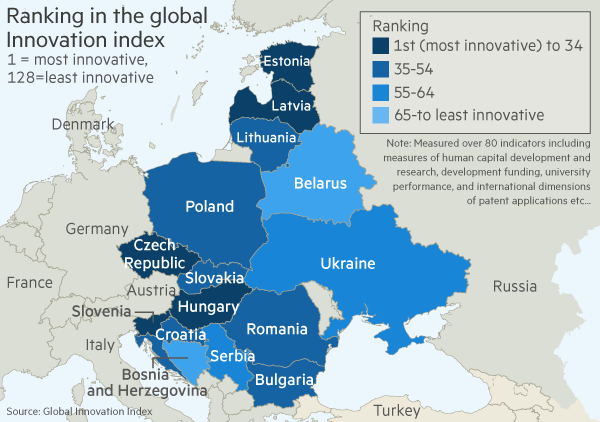Best transition to a new economic growth model that avoids middle-income trap of countries from Central and Eastern Europe could be based on digitalization.
Central and Eastern Europe (CEE) has seen tremendous and unparalleled economic success since the Fall of the Berlin Wall nearly 30 years ago.
The 10 CEE countries that are members of the European Union recorded on average a 114 percent increase in GDP per capita between 1996 and 2017, compared to an increase of just 27 percent in the European Union’s “Big 5” economies: France, Germany, Italy, Spain, and the United Kingdom.
However, future economic growth projections for the CEE region are gradually decreasing not only due to a late phase in the economic cycle but mostly due to what economic experts call a mid-income trap.

The need for a new growth model
The European Bank for Reconstruction and Development (EBRD) found in their recent report that the CEE economies need a new growth model “having exhausted the advantages that used to underpin their strong growth performance in the past”.
According to the report, countries in the region must “support firm dynamics and innovation and integrate their firms into the global economy to complete their transition to sustainable market economies.”
Economists note that the CEE economies face a high risk of being stuck in the middle-income trap, a term once coined for countries in Southeast Asia that were unable to continue on their rapid economic growth trajectory after having reached a certain level of moderate economic development.
From traditional trade to new markets
Indeed, to continue with strong economic growth, CEE countries must rethink their economic development model by shifting from imitation to innovation, from traditional trade and investment partners to new markets and new counterparties, and from traditional industries to new, knowledge-based areas of the economy.
At the same time, such strategies must take note that the global economy today is very open with low cross-border transportation, investment, and trade costs. Innovators today are often immediately competing for the global marketplace.
“To continue with strong economic growth, CEE countries must rethink their economic development model by shifting from imitation to innovation”
Digitalization, the next growth engine
According to the global consulting firm McKinsey & Company, a key ingredient that will support and enable the transformation of the CEE economic model is digitalization. Labeling CEE countries as Digital Challengers, McKinsey argues that “digitalization can become the next growth engine for CEE”. They recommend that businesses in the region increase their adoption of digital tools and take advantage of digital solutions and work on a digital economy for reaching new customers and expanding into regional and global markets.
As McKinsey notes, “we are at a point in time where the rules of the digital game are crystallizing and new ecosystems emerging.”

Luka Repansek
Country Director CEE for Opportunity Network.
Financial services professional, with a focus on strategy and business development.
International banking and strategy consultant.




